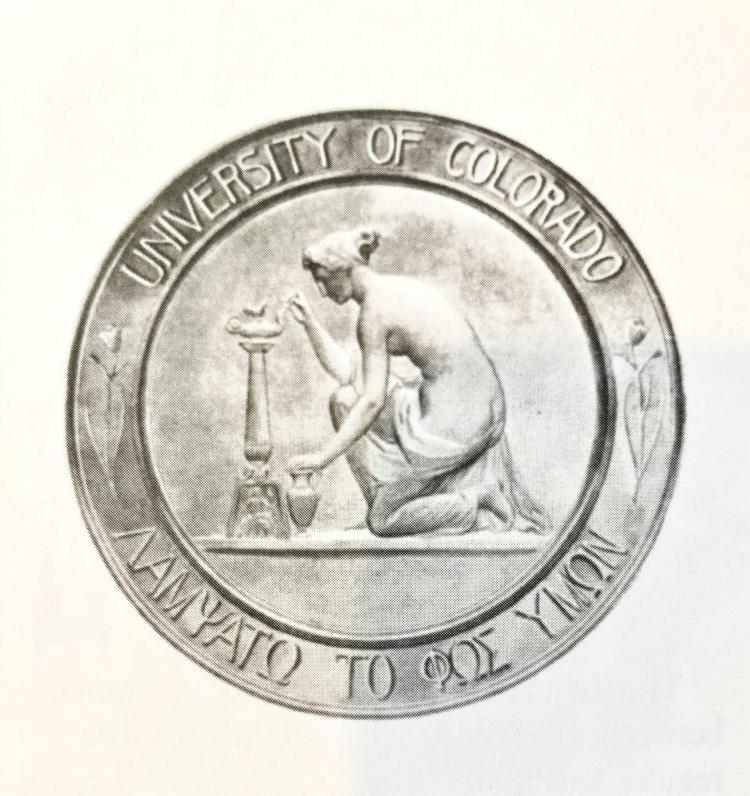CU’s symbol is male, but the first version highlighted a female
Women’s history snapshot: From 1893 to 1908, the University Seal featured an image of a Greek female and the ‘Let Your Light Shine’ motto
Those who know the University of Colorado generally recognize the official University Seal: It adorns diplomas, transcripts and other official documents.
The seal depicts a male Greek classical figure sitting near a pillar, holding a scroll. His scroll points toward laurel branches framing a burning torch. In between are the words “Let Your Light Shine.”

At the top of the page: The current seal of CU Boulder, adopted in 1908, depicts a male Greek classical figure sitting in front of a pillar and holding a scroll. Next to the figure, laurel branches frame a burning torch. The inscription in Greek reads “Let Your Light Shine.” Above: The central figure on the first university seal was a Greek woman.
This is the university’s second adopted seal. The first also depicted a Greek figure kneeling before a lamp, bearing the same message. A key difference is that central figure on the first university seal was not a man, but a woman.
Introducing the first University Seal in 1893, then President James Baker told that year’s graduates that the emblem bore a Greek motto, “chosen from the volume of Christian teachings, translated to mean ‘Let Your Light Shine.’”
The emblem itself was a reproduction of a medallion created by William Wyon, a British engraver. As Baker told the graduates, the outer rim of the seal was an etching of the mariposa lily, “plucked in the fullness of bloom from the base of our own beautiful foothills—a true Colorado flower.”
Baker concluded, “One who chooses to decipher these emblems may read—Truth, Art, Science.”
Before 1893, the university used a slightly altered version of the official seal of the State of Colorado, but the CU Board of Regents never officially adopted that seal, or—President Baker’s statements notwithstanding—the one featuring the female Greek figure.
As William Davis reports in Glory Colorado, the regents officially chose the current seal in 1908, picking a design by a Henry Read of Denver. Read said he stuck with the classical theme because “the Greek civilization stood as the criterion of culture.”
The central idea of the seal was light. The laurel suggested honor or success, and the scroll signified written language. “The ‘morning’ of life was indicated by the figure of a young man,” Davis writes.
Today, CU uses two versions of the University Seal. The “official seal,” which features the motto in Greek letters, is used on diplomas, official transcripts, and officially certified regent actions. It is also featured on the president’s chain of office, the university mace, commencement programs, regent regalia and print and electronic publications of the Board of Regents.
The “commercial seal” is identical except that the motto is in English. That seal may be used on official CU stationary, envelopes, websites, signs, vehicles or clothing. It can also be used on business cards of CU employees.
Sources: Sources: Glory Colorado, A History of the University of Colorado, 1858-1963; CU system brand and identity guidelines.

